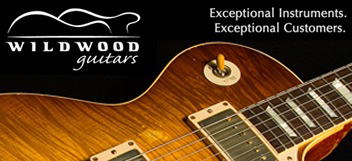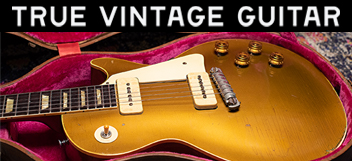apossibleworld
New member
- Joined
- Oct 16, 2008
- Messages
- 362
I think they were using up left over Epi parts.
That was what I had thought at first, but now I'm wondering if Gibson actually manufactured these as an attempt to replace some of their other high end tuners (like Grover Imperials that otherwise went on the Emperors). When you look at the tuners up close, it doesn't appear that Gibson simply stamped a single line into the back of the tuner to change the E to a G.
I remember reading someplace about a tuner shortage in the late 50s, about Gibson having a hard time meeting the demand, with their suppliers. Does anyone know where I might have read this?
Here they are on my 1959 Emperor






